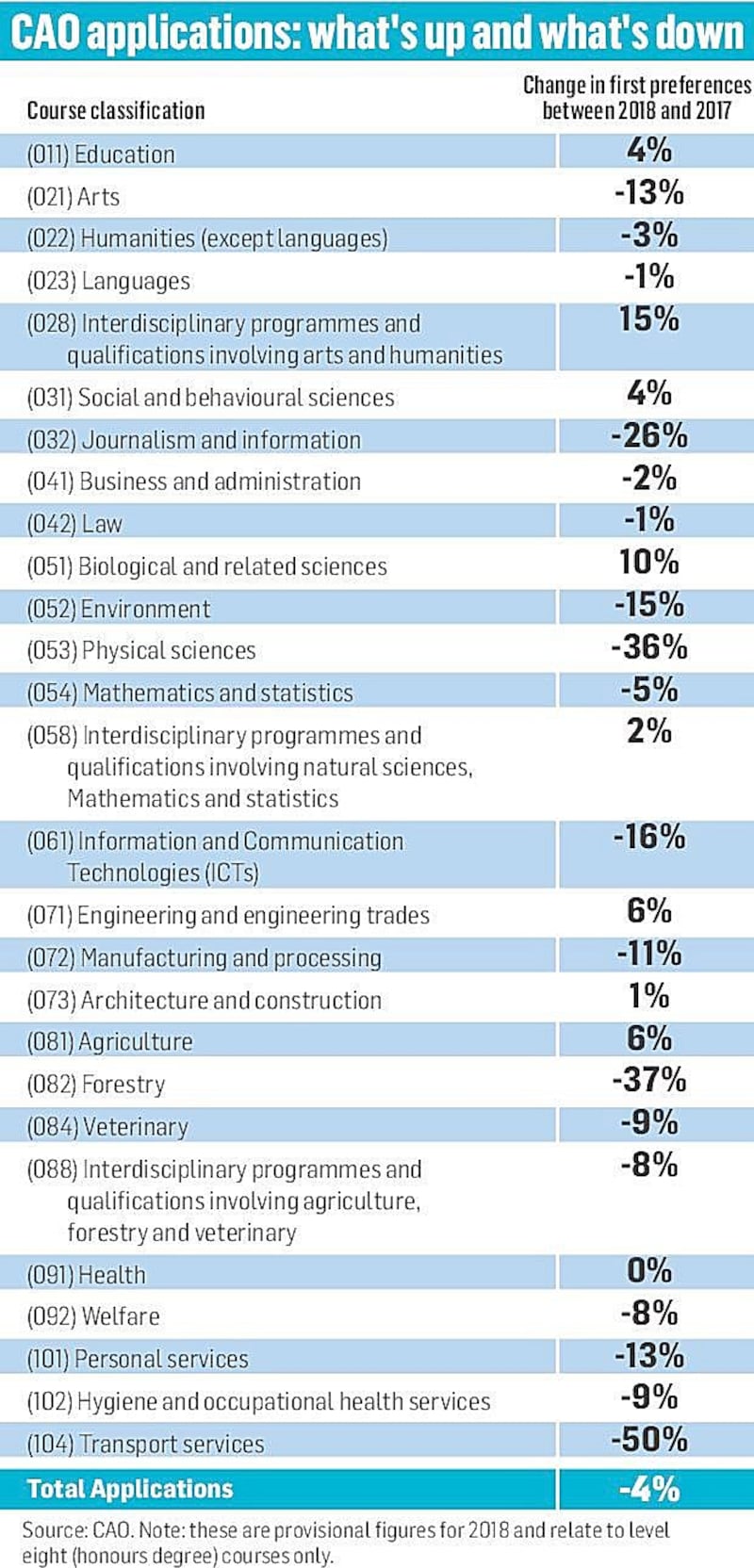During the economic crash, higher education became a refuge for many seeking to carve out new careers as their livelihoods went up in smoke.
This was particularly true of mature students who flocked to universities and institutes of technology to up-skill or re-skill.
These days, against the backdrop of a growing economy, many feel they have more options.
That, at least, seems to be the message behind a significant drop in CAO applications.
Overall, the number of applications is down by almost 5 per cent. Among mature applicants, the reduction is down by much more: 12 per cent.
More school-leavers may also be opting to go directly into work or into further education, though we don’t have access to these figures yet.
Either way, this is welcome news for Leaving Cert students who hope to go to college later this year.
It is likely that points - which are simply a barometer of supply and demand - will fall across many courses.
Third-level institutions tend to set aside up to 15 per cent of places on their courses for mature students. Many of these places may, instead, end up being allocated for students sitting this year’s exams.
Where points will fall (or rise) hinges on this year’s trends for applicants’ course choices.
The sharpest year-on-year drops in first preferences for honours degree (level eight) are in areas such as physical sciences - that is chemistry or pharmaceutical courses (-36 per cent).
Other major reductions are in journalism and information (-26 per cent), ICT (-16 per cent), environment (-15 per cent), arts (-13 per cent) and languages (-9 per cent)
These reductions should, however, be treated with caution.
Headline figures can be deceiving as individual courses can buck key trends.
Demand for courses may yet change significantly as applicants may re-adjust their course preferences up until July 1st.
Just over 6,000 applicants have yet to state their course preferences, for example.
It’s also worth noting that the way courses are classified in groups by the CAO has changed, so comparing trends is a little more uncertain this year.
What is clear, however, is that application increases are concentrated in areas such as biological and related sciences (+ 10 per cent), engineering, agriculture (both +6 per cent) and education (+4 per cent).

The increase in applications to education will come as a relief to many given what trade unions says is a “crisis” in teacher supply across key subjects.
Applications for both primary teaching (+8 per cent) and secondary teaching (+4 per cent) have increased.
Courses in areas such as law, architecture, nursing, health and social sciences have remained broadly steady this year.
The overall drop in applications, meanwhile, is dwarfed by a much bigger decrease in male applications.
The proportion of young men applying to the CAO is down by about 7 per cent; so where are they going?
If they are going to apprenticeships and further education, it is good news - and a sign of potential rebalancing of our education system which is so heavily tilted toward higher edcation.
Many, however, many be going straight into the workforce or construction, which suffered so heavily a few years ago.
Another key change this year is a signifcant reduction in the number of applicants from poorer backgrounds.
The proportion of students applying under a special access route which provides reduced points - known as Hear - has fallen by 9 per cent, or just over 1,000 students.
When figures are broken down by county level, the biggest reductions in applications are from countries around the border which are furthest from third level.
Again, if these young people are going to further education it is a positive development - though it would be disturbing if students who were able for higher education ruled it out on cost grounds.














